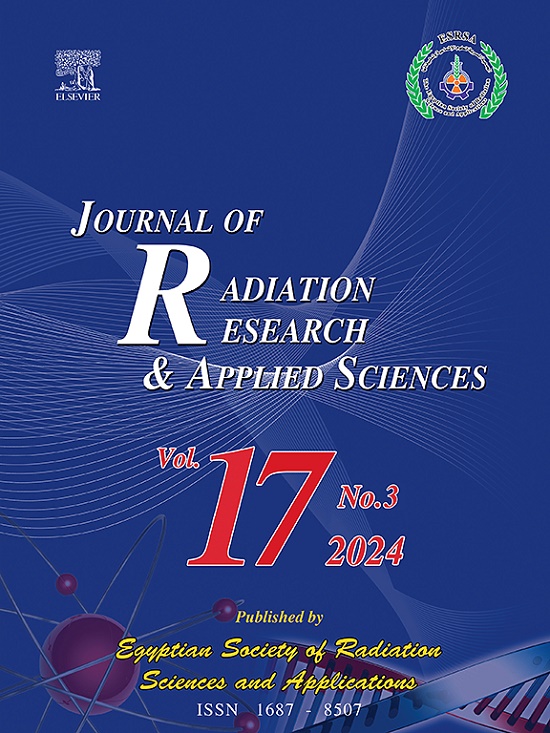甲状腺结节预测的多模态特征整合:将临床数据与超声深度特征相结合
IF 1.7
4区 综合性期刊
Q2 MULTIDISCIPLINARY SCIENCES
Journal of Radiation Research and Applied Sciences
Pub Date : 2024-11-25
DOI:10.1016/j.jrras.2024.101217
引用次数: 0
摘要
方法 我们分析了来自 580 名甲状腺结节患者的数据,这些患者被分为 TIRADS 2 到 5 级。使用 EfficientNet-B0 将临床和放射学特征(如结节大小、TIRADS 类别、回声性)与从超声扫描中提取的深度成像特征相结合。使用 XGBoost、随机森林和支持向量机(SVM)开发了预测模型,形成了纯临床模型、纯成像模型和混合模型。此外,基于堆叠的元模型整合了所有三种模型的预测结果,以提高性能。模型评估指标包括准确率、F1-分数和 AUC-ROC,并应用超参数调整来优化结果。结果临床模型显示出很强的预测能力,XGBoost 的准确率达到 81%,AUC-ROC 为 0.85,F1-分数为 0.82。成像模型展示了深度特征提取的价值,准确率高达 79%,AUC-ROC 为 0.83。混合模型进一步提高了预测效果,XGBoost 的准确率达到 85%,AUC-ROC 为 0.87。我们的研究表明,结合临床、放射学和深度成像特征可显著提高甲状腺结节恶性肿瘤的预测能力。基于堆叠的框架提供了一种可扩展、可重复的工具,以支持更准确的临床决策、减少不必要的活检并提高诊断精度。本文章由计算机程序翻译,如有差异,请以英文原文为准。
Multi-modal feature integration for thyroid nodule prediction: Combining clinical data with ultrasound-based deep features
Objective
This study presents an advanced machine learning (ML)-based framework for accurate risk stratification of thyroid nodules by integrating clinical, radiological, and deep imaging features.
Methods
We analyzed data from 580 patients with thyroid nodules, categorized from TIRADS 2 to 5. Clinical and radiological features (e.g., nodule size, TIRADS category, echogenicity) were combined with deep imaging features extracted from ultrasound scans using EfficientNet-B0. Predictive models were developed using XGBoost, Random Forest, and Support Vector Machine (SVM), resulting in clinical-only, imaging-only, and hybrid models. Additionally, a stacking-based meta-model integrated predictions from all three models to enhance performance. Model evaluation metrics included accuracy, F1-score, and AUC-ROC, with hyperparameter tuning applied to optimize outcomes.
Results
The clinical models showed strong predictive ability, with XGBoost achieving 81% accuracy, 0.85 AUC-ROC, and an F1-score of 0.82. Imaging models demonstrated the value of deep feature extraction, reaching up to 79% accuracy and 0.83 AUC-ROC. The hybrid model improved predictions further, with XGBoost achieving 85% accuracy and 0.87 AUC-ROC. The stacking ensemble model provided the best performance, achieving 87% accuracy, an F1-score of 0.87, and 0.90 AUC-ROC, demonstrating the benefits of multi-modal feature integration.
Conclusion
Our study shows that combining clinical, radiological, and deep imaging features significantly enhances the prediction of thyroid nodule malignancy. The stacking-based framework offers a scalable, reproducible tool to support more accurate clinical decision-making, reduce unnecessary biopsies, and improve diagnostic precision.
求助全文
通过发布文献求助,成功后即可免费获取论文全文。
去求助
来源期刊

Journal of Radiation Research and Applied Sciences
MULTIDISCIPLINARY SCIENCES-
自引率
5.90%
发文量
130
审稿时长
16 weeks
期刊介绍:
Journal of Radiation Research and Applied Sciences provides a high quality medium for the publication of substantial, original and scientific and technological papers on the development and applications of nuclear, radiation and isotopes in biology, medicine, drugs, biochemistry, microbiology, agriculture, entomology, food technology, chemistry, physics, solid states, engineering, environmental and applied sciences.
 求助内容:
求助内容: 应助结果提醒方式:
应助结果提醒方式:


